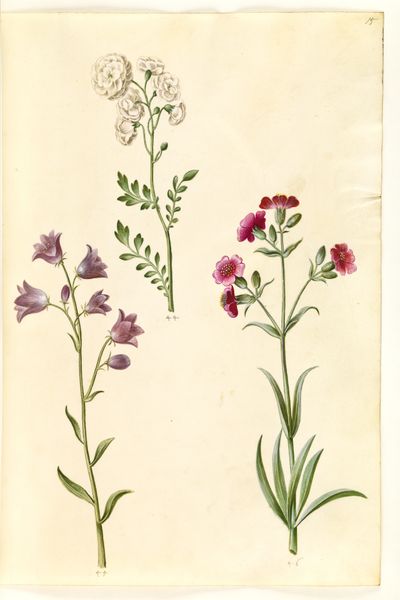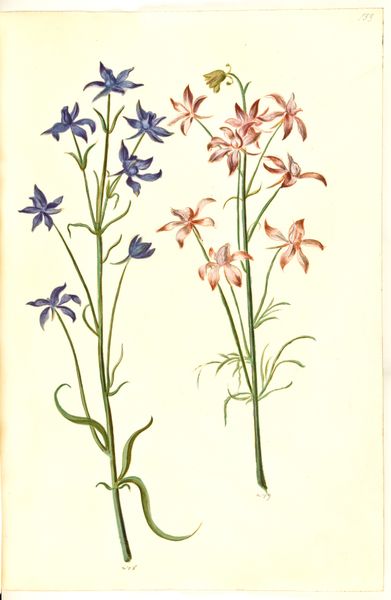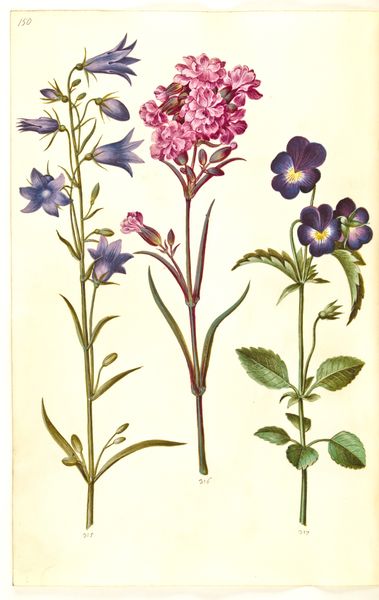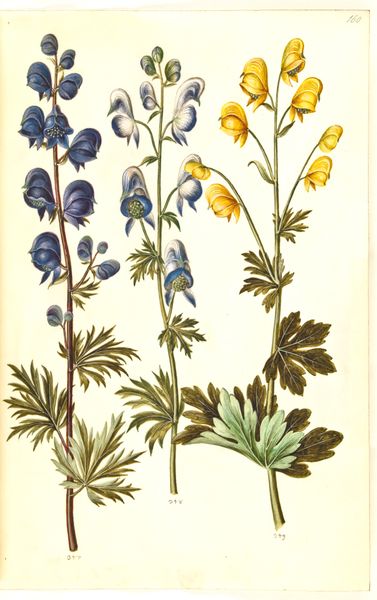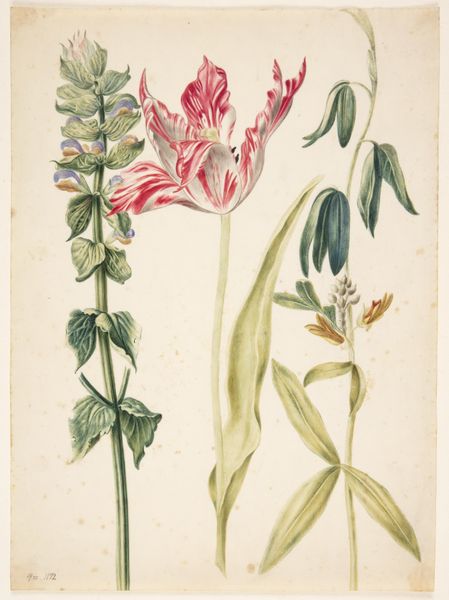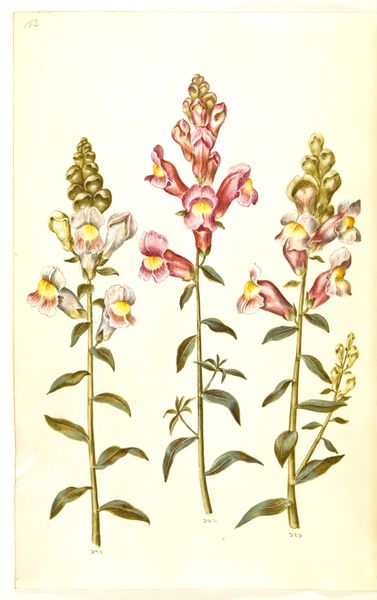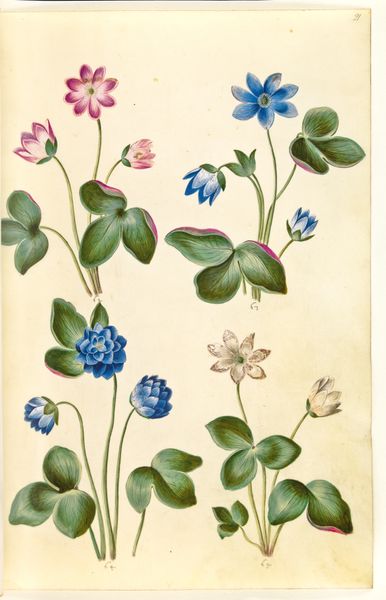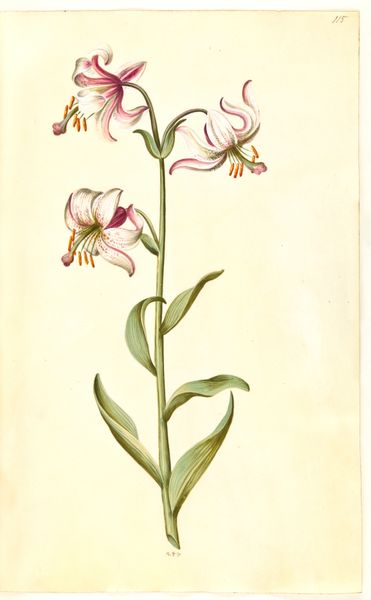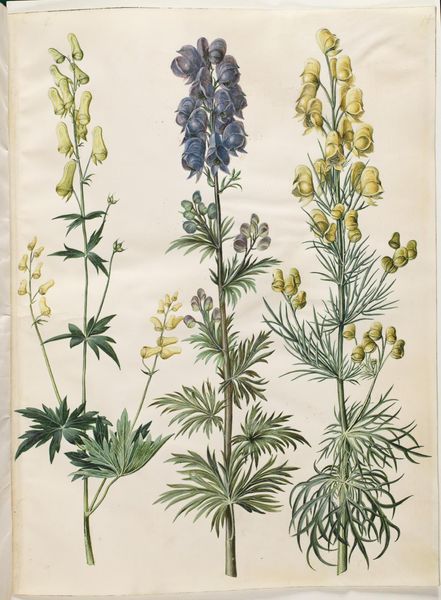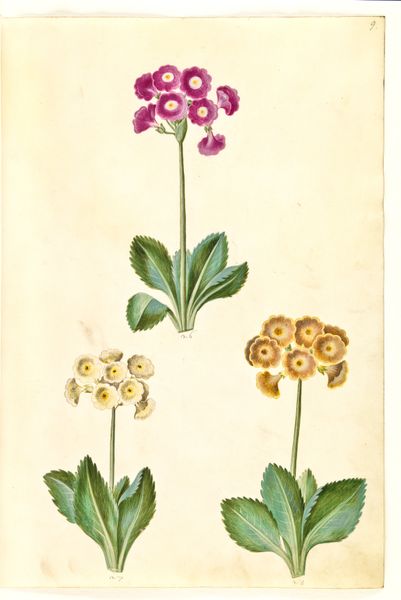
drawing, gouache, watercolor
#
vegetal
#
drawing
#
gouache
#
watercolor
#
botanical drawing
#
watercolour illustration
Dimensions: 375 mm (height) x 265 mm (width) x 85 mm (depth) (monteringsmaal), 358 mm (height) x 250 mm (width) (bladmaal)
Curator: Looking at this watercolor illustration, I find myself completely drawn to the intense stillness of these flower portraits, captured with such meticulous detail. Editor: Indeed, there's a hushed quality to it. The way the white background isolates the three stems—it feels almost… scientific. Like a study frozen in time. Tell me more. Curator: Of course. We're viewing "Consolida ajacis (have-ridderspore)" by Hans Simon Holtzbecker, created sometime between 1635 and 1664. Holtzbecker was a significant botanical artist, and this drawing—rendered in watercolor and gouache—showcases his remarkable ability to combine artistry with scientific accuracy. Notice how he uses color and form not just for aesthetic pleasure, but to document variations within the species itself. Editor: You're right, each stem does present a different color profile. But I keep returning to that scientific detachment. There is a beauty to that method. In the 17th century, with botany still solidifying as a science, I'm curious about the audience. Who was this intended for? Curator: Botanical illustrations served varied purposes. While some might be collected as works of art by wealthy patrons interested in gardens, the core intent behind many of these pieces was to facilitate botanical study and perhaps even medical application. Each element of the plant is meticulously captured, which aids in plant identification for medical usage, hence we circle back to this artistic stillness you are finding in the composition, it served the clear intention to create usable data first. Editor: That makes perfect sense. The meticulous rendering speaks to a desire for clarity and objective record-keeping. And knowing Holtzbecker operated in a context driven by that burgeoning scientific culture, that adds depth to what I initially perceived as a coldness. It’s anything but dispassionate; there's a cultural intention imbedded in its visual clarity. Curator: Precisely. In its restrained beauty, we glimpse a unique moment of early scientific visualization that aimed to bring order and legibility into our growing awareness about the natural world. Editor: Absolutely. It’s a delicate convergence between art and science, a beautiful reminder that even in precision, beauty and meaning find their place.
Comments
No comments
Be the first to comment and join the conversation on the ultimate creative platform.
